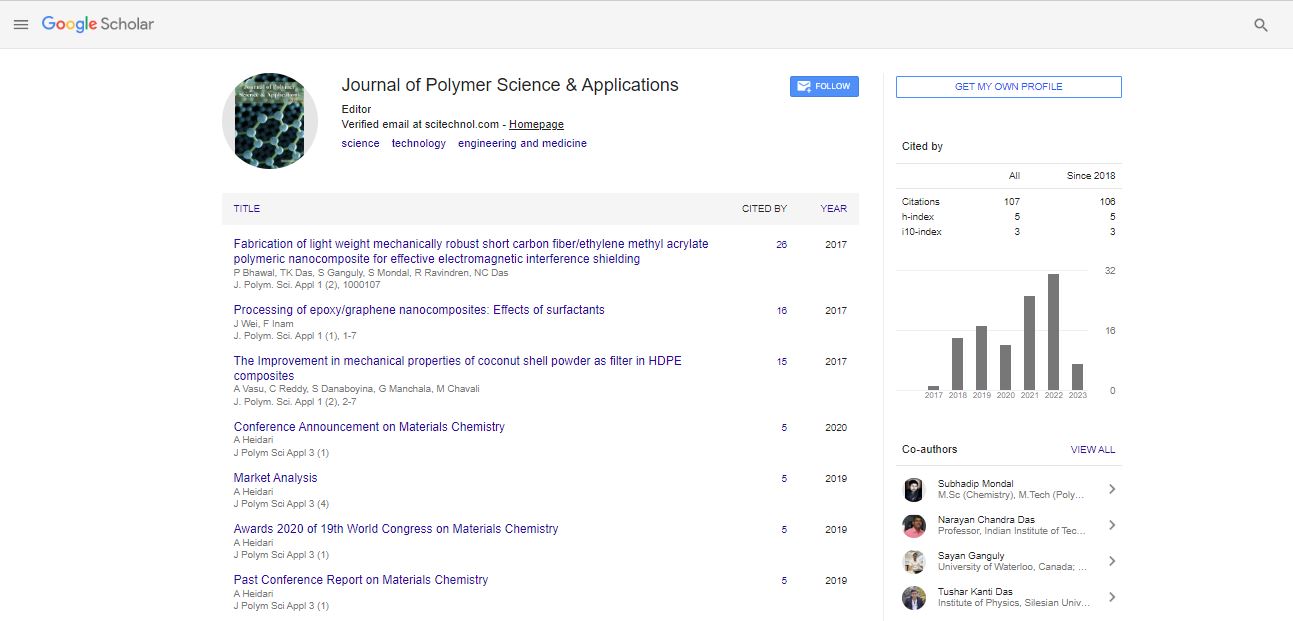Extraction of Ce(IV) by Tri-n-Butyl Phosphate and Tri-sec-Butyl Phosphate: A Combined Experimental and Quantum Chemical Study
Aditi Chandrasekar, Sivaraman Nagarajan, Tapan K. Ghanty, and Suresh Ammath
Homi Bhabha National Institute, INDIA
Theoretical Chemistry Section, INDIA
: J Polym Sci Appl
Abstract
Third phase formation occurs when the metal loaded in the organic phase exceeds a threshold known as the limiting organic concentration (LOC) beyond which the organic phase splits into a metal-extractant rich third phase and a metal poor diluent rich phase. The data on Pu(IV) third phase formation is crucial for designing solvent extraction processes; in this light, in a preliminary study we have examined third phase phenomenon behaviour of Ce(IV), which is chemically similar to Pu(IV). 1.1M solutions of Tri-n-butyl Phosphate (TBP) and Tri-sec-butyl Phosphate (TsBP) in n-dodecane were evaluated in the extraction of Ce(IV) from 4M nitric acid medium. The aqueous Ce(IV) concentration was varied over a wide range (1−280 mg/mL) and the Ce(IV) extracted to the organic phase was measured both before LOC as well as in the third and diluents phases after their formation. The acid loaded in the organic phase and density of loaded organic phase were also estimated. The extraction profiles indicate that the LOC as well extraction of Ce(IV) by TsBP is higher than that of TBP. Ce(IV) concentration and the density in the third phase are higher than those values for diluent phase at a particular aqueous concentration of Ce(IV) for both the solvents. The acid loaded in the organic phase is higher in the case of TsBP solvent system than TBP. The higher metal extraction as well as the acid extracted to the organic phase in the case of the TsBP system is attributed to the higher basicity of the phosphoryl oxygen in TsBP extractant.
In addition to the experiments, computational studies using density functional theory using ORCA version 3.0.3 have been carried out in order to compute the energetics of complex formation for these extractant systems with Ce(IV). The structures of the bare ligands and their complexes with Ce(IV) have been optimized to obtain energy minima and subsequently analysed for their structure and binding energies. The solvent corrected binding free energies obtained by DFT are in good agreement with the experimental results.
 Spanish
Spanish  Chinese
Chinese  Russian
Russian  German
German  French
French  Japanese
Japanese  Portuguese
Portuguese  Hindi
Hindi 